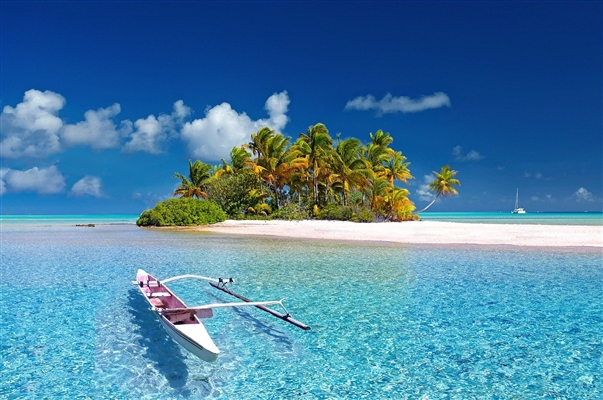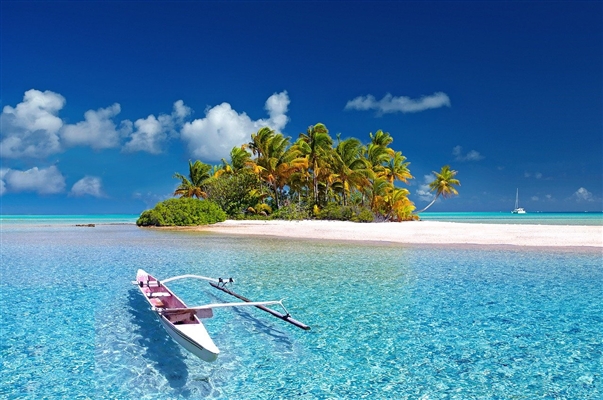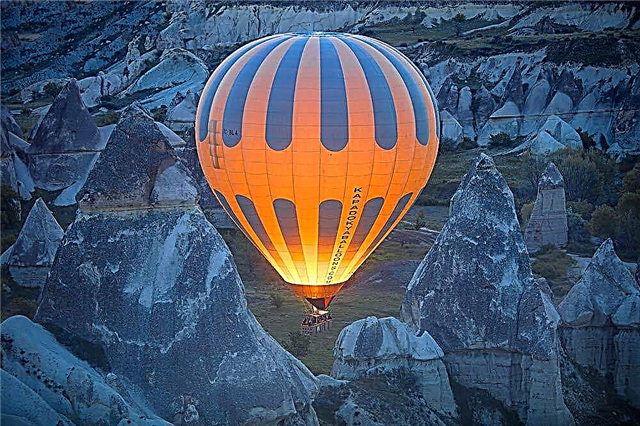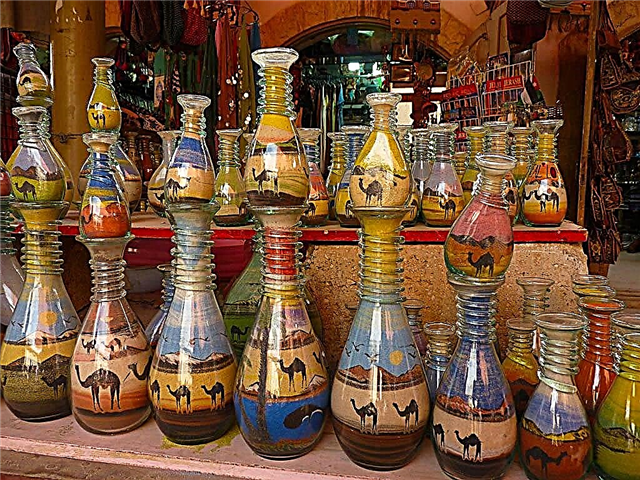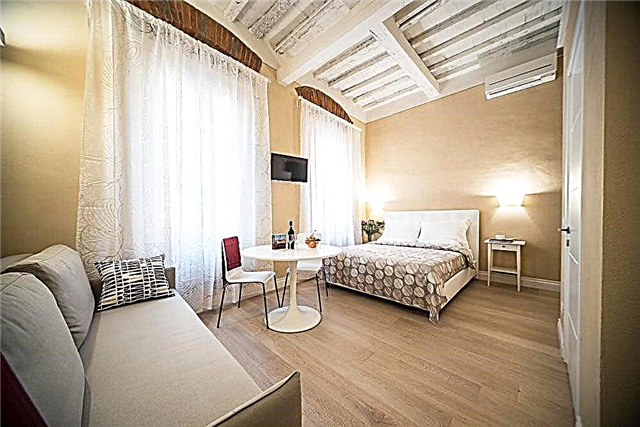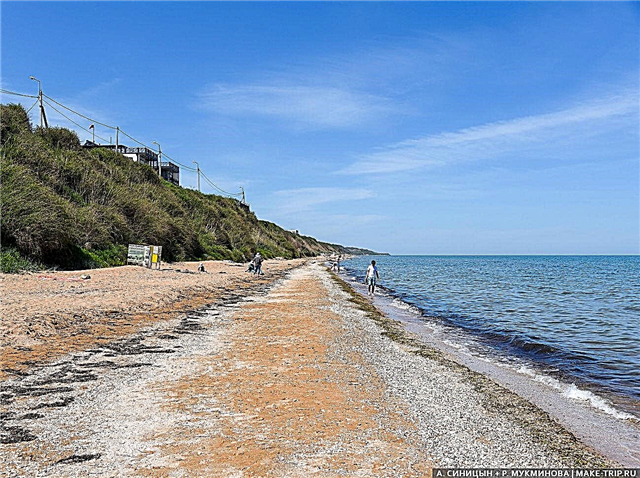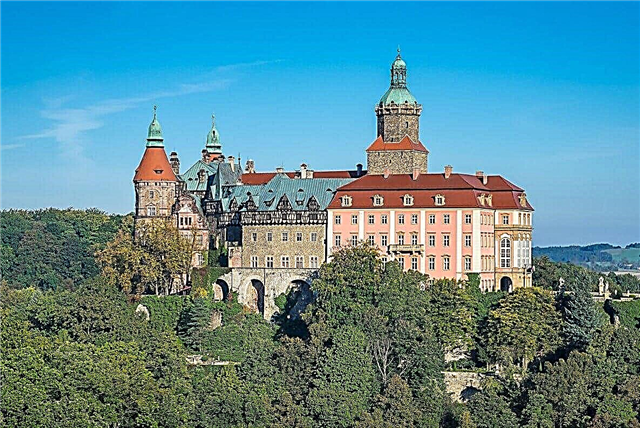The small country Poland has a rich historical heritage. Many medieval buildings have changed their original appearance over time, but most of the ancient castles have survived to this day. In the southern part of Poland, there is a territory with the poetic name "The Way of the Eagles' Nests".
Here, on the rocky terrain, by order of Casimir the Great, castles were built in the XIV-XV centuries. Today, only ancient ruins remain of the majestic buildings, but Polish cities have preserved many ancient castles and medieval fortresses. Now many of them are museums and reconstructions of historical events are being carried out.
The most interesting and beautiful castles in Poland
List, photo with titles and descriptions.
Malbork
It is one of the most famous and beautiful medieval castles. This huge Gothic castle with an area of 21 hectares is located in Warsaw on the territory of Zhulyawi and is an architectural complex that includes the Upper, Middle and Lower Castles. Various historical exhibits can be seen in the castle museum. Alternatively, those who wish can wander around the castle in search of ghosts on a night tour.

Wawel castle
It arose in the X-XI centuries. The Gothic castle, built on a hill, was destroyed at the end of the 15th century due to a strong fire. A significant reconstruction of the castle was carried out by King Alexander and his brother Sigmund. A beautiful palace in the style of the Italian Renaissance was erected on the site of the old building. The castle is decorated with a courtyard made in the best traditions of the Renaissance. The galleries of the palace have preserved ancient paintings of the 16th century.

Royal Castle in Warsaw
Located in the center of Warsaw, it is an important symbol of Poland. For many centuries, the castle belonged to powerful Polish dynasties, it was often rebuilt and restored. During the Second World War, it was practically destroyed by the Nazis, and only in 1988 it was reconstructed. Currently, the castle is in the form in which it was in the 18th century. The castle is open to the public and tourists can admire its beautiful interior.

Ksenzh
Large imposing castle on a cliff, built in the 13th century in Lower Silesia. During the Second World War, it was heavily plundered by the Nazis, who set up a headquarters here. However, the castle continues to attract many tourists with its beauty and luxury. At Ksienz, there is a beautiful well-kept garden and a horse riding center. Also, various cultural events are held here, interesting exhibitions are arranged.

Moshnensky castle
A beautiful castle surrounded by a picturesque park is located in the village of Moszna. The construction of the castle dates back to the 17th century. The castle has a special eclectic style. The architectural structure has dozens of towers of various sizes. At the end of the 19th century, the castle was severely destroyed by fire. After a large-scale reconstruction, a winter garden appeared near the castle, which has survived to this day. In 1972, a sanatorium was opened here. Currently, the castle houses an art gallery.

Stettin castle
It arose in the XIV century on the Odra River in the city of Szczecin. For many years it was a ducal residence. Known for the fact that the future great Russian empress Catherine II was born here. In the 17th century, the castle passed into the possession of Sweden, in the 18th century it became the property of Prussia. During the Second World War, the castle was badly damaged, but after the restoration work, the Stettin castle returned to its former appearance. The castle is now open to tourists.

Chokha castle
Medieval fortress built in the 13th century on Lake Lesna by the Czech king Wenceslas I to defend the borders. Initially, the castle was made of wood with stone and earth buildings. However, over time, having changed many owners, the fortress acquired a more elegant and romantic style. The castle has experienced many historical events and is currently open to visitors and functions as a museum.

Krasicki Castle
Luxurious Renaissance castle dating back to the end of the 16th century. Located near the picturesque town of Przemysl on the San River. Initially, the castle was supposed to become a fortress, but later, under the owner Martin Krasicki, it was rebuilt in the spirit of the Italian Renaissance and acquired a more elegant and noble appearance. Currently, the castle is undergoing partial restoration work.

Lancut Castle
The beautiful castle, built at the beginning of the 17th century, belonged first to Prince Stanislav Lubomirsky, and then in the 18th century to Isabella Lubomirskaya, who created a magnificent park here. The princess became the founder of the tradition of holding chamber music days in the castle. This tradition has survived to this day. The castle has been well preserved to this day, and now the building houses a museum.

Olsztyn castle
It was built in the XIV century. It was originally built as a medieval fortress. The castle had a high 20-meter pillar tower, which could only be penetrated with a special winch. However, over time, the castle lost its defensive significance and became a residence for bishops. In the 16th century, the famous scientist Nicolaus Copernicus lived here. In the 17th century, the castle was destroyed, and today you can see only the surviving ruins of the ancient castle.

Kwidzyn castle
Medieval castle built by the Crusaders in the 14th century. Kwidzyn Castle was badly damaged by numerous attacks. At the end of the 18th century, the castle was the seat of the supreme judicial authority, some of the premises were transferred to the school. However, King Frederick William IV decided to carry out a large-scale reconstruction in the building. In the XX century, the castle was captured by the Nazis. Today the castle houses a museum.

Peskova Skala
A castle built in the 14th century on a limestone rock. It is one of the "eagle's nests" - castles created to protect the trade route. In the 16th century, the castle underwent a significant reconstruction. After the end of the Second World War, the castle was reconstructed and a branch of the State Art Gallery was opened on Wawel.

Frombork Castle
It was built in the XIII century by the Teutonic Order and was a fortress. Later, the famous Polish scientist Nicolaus Copernicus lived in this castle for a long time. The castle grounds also include a Gothic cathedral dating back to the 14th century. Frombork is well preserved to this day and is open to tourists. The castle houses the Copernicus Museum and the Planetarium.

Bedzin Castle
Medieval fortress on the territory of Galicia, which arose in the XIV century. It included the Upper and Lower Locks. At the end of the 16th century, the fortress began to lose its defensive significance and fell into desolation. In the 19th century, only ruins remained from the castle. Count Edward Rachinsky tried to recreate a medieval fortress. However, the reconstruction began much later, in 1952. Now the castle houses a museum.

Kryztopor Castle
The magnificent castle arose in the 17th century in the style of a palace in a fortress. It reflected the calendar time, since there were 365 windows, 52 rooms, 12 halls, 4 towers in the castle. Since the end of the 18th century, the castle began to fall into desolation and turn into ruins. In 2005, the Association appeared, which was engaged in the restoration of the ancient castle. Currently, Kryzhtopor has been partially restored and is open to tourists.

Kurnicki castle
The Gothic castle dates back to the 15th century. In the 16th century, it was rebuilt to enhance its defensive significance. However, in the 17th century, the medieval fortress underwent changes again. The Kurnice castle acquired baroque features. The interior of the palace was notable for its beauty and wealth. There were luxurious fountains in the park, a variety of birds lived, and rare species of plants were bred in greenhouses. At the end of the 18th century, the castle began to decline. Now the castle has been restored and is open to the public.

Niedzica Castle
Medieval fortress, built in the XIV century in the south of Poland on the Dunajec River. The castle was located on the border and was of great importance for Polish-Hungarian relations. In 1946, a unique find was discovered in the castle - the Peruvian kuipa, an encrypted ancient Indian knot message. Now the castle is in state ownership. A museum has been created on its territory.

Grodziec Castle
Medieval Gothic castle towering on a mountain. It was built in the XII century. In the 16th century, the territory of the castle expanded and acquired Renaissance features. In the 17th century, Grodziec belonged to Emperor Leopold I. In the 18th century, the owners of the castle changed frequently. In 1800, the rooms of the castle began to be rented to tourists. Today the castle belongs to a private person.

Ryn Castle
The castle built by the Teutonic Order in the XIV century between the lakes. At the end of the 18th century, the castle was deserted and was sold at an auction. In the 19th century, the castle became a women's prison. Then it was badly damaged in a fire. After the restoration work, the castle has noticeably changed. During the Second World War, the castle was again used as a prison. Currently, the Ryn Castle serves as a four-star hotel.

Castle Wrath
Located on the Vistula River. The powerful fortress, built in the XIII century by the Teutonic Order, has been well preserved to our time. In the 15th century, the ancient fortress was significantly fortified. In the 17th century, the castle was captured by Swedish troops. In the 19th century, the fortress was reconstructed, the main tower was noticeably reduced in size. Now on the territory of the castle is the Archaeological Museum.

Lidzbark Warmiński Castle
Gothic castle on the Samsarna River, built in the 13th century by the Teutonic Order. From the second half of the 16th century, the castle began to acquire a more refined style. From the end of the 18th century, Lidzbark Warmiński became the seat of many bishops. The famous scientist Nicolaus Copernicus also lived in this castle. Now the castle houses a museum.

Castle in Kopice
Built in the XIV century. Over the centuries, the castle has changed its appearance. At the end of the 18th century, a large-scale reconstruction of the building was carried out. The territory of the castle adjoined a winter garden, greenhouses, a picturesque park with numerous sculptures that have not survived to this day. A fire in 1958 severely destroyed the castle. Now only ruins remain of the beautiful castle.

Castle Klitschkow
Lower Silesia Castle. Built at the end of the XIII century in a picturesque area. At the end of the 19th century, it changed greatly under the influence of different styles. The castle is surrounded by a huge park covering an area of 80 hectares. There is a pet cemetery in the park area. Today the castle houses a hotel, a restaurant, and sports grounds.

Bobolice Castle
It was built in the XIV century and was part of the "Eagle's Nests", created by Casimir the Great to protect the borders. At the end of the 16th century, Bobolice suffered serious damage during the siege of the castle. In 1999-2011, the castle was reconstructed. However, at present Bobolice is only partially preserved, and tourists can see the ancient ruins of the castle only during certain periods.

Baranow Sandomierz Castle
Luxurious castle of the XVI century, made in the Italian Renaissance style. Built by Polish magnates Leszczynski. In the 19th century, there were two devastating fires in the castle. The castle was partially restored. Currently, Baranów Sandomierz Castle is a major tourist center.

Castle Bytów
The Gothic castle in northwestern Poland was built at the beginning of the 15th century and belonged to the Teutonic Order. The ancient fortress was protected by a deep moat. Bytów was one of the first European castles designed for the use of firearms. In the 16th century, a bakery and a brewery were built in the castle. In the XVIII-XIX centuries Bytuv passed to the Prussian lands. Now the castle houses a hotel with a restaurant.

Castle Golub-Dobrinj
Gothic medieval castle built in the 14th century by the Crusaders on Prussian soil. Golyub is more ancient, Dobrinj originated in the 17th century. The two parts of the castle were united only in 1951. In different historical periods of its existence, the castle belonged to four queens. Since the 19th century, the castle began to gradually deteriorate. After the restoration work, various institutions began to function on the territory of the castle, such as a library, a hotel, etc.

Lublin castle
Luxurious ancient castle in the city of Lublin, built in the XII century on a high hill on the site of the settlement of the ancient Slavs of the VI-IX centuries. Was the royal residence. Over the centuries, it was rebuilt many times. In the 17th century, the palace was captured by the Swedish army. In the 19th century, a prison was set up in the castle building. Now the Lublin Museum has been created on the territory of the former palace.

Wartenberg castle
This modern castle, built on a hilly area in the style of German Romanticism, is also called Przegorzalsky. It was built during the Second World War in 1942-1943, the construction of the castle was supervised by the Governor-General Hans Frank. After the end of the war, the castle was transferred to the Research Institute of Forestry. Now Wartenberg belongs to the Jagiellonian University. Today the castle is closed to tourists.

Castle in Bolków
Located in the small town of Bolków on the high Castle Hill, towering over the sea at a level of 396 meters. The old tower was built in the 13th century in Lower Silesia. At the end of the XIV century, the castle passed into the possession of the Czech Republic. In the 19th century it became the property of the Prussian lands. In 1953, a museum was located on the territory of the castle.


